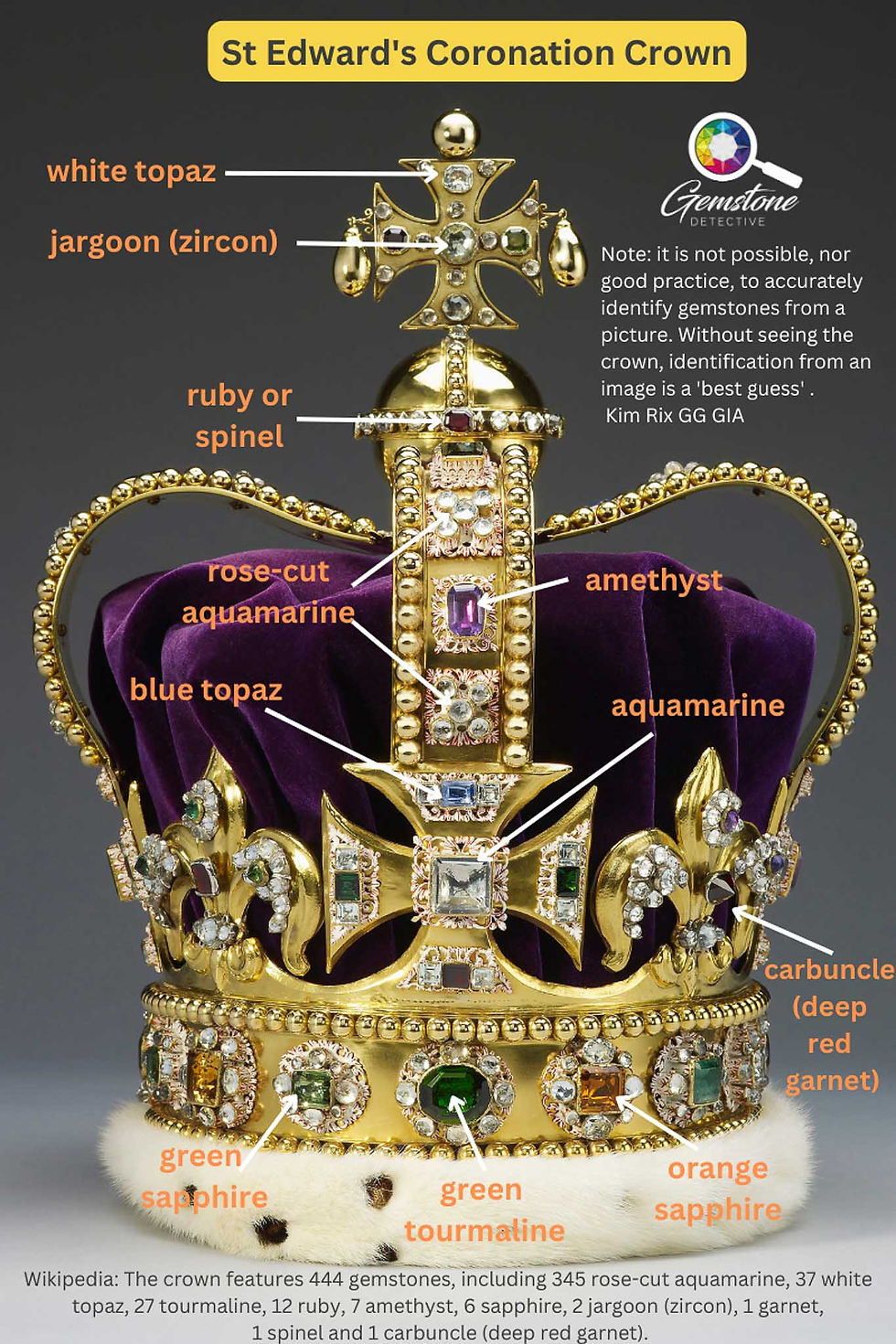5 Facts about The St Edward's Crown that will surprise you!
- Kim Rix

- Apr 26, 2023
- 2 min read
Updated: May 3, 2023
The St Edward's Crown is a quintessential symbol for the monarch, representing their power and authority as the head of state. It is a physical manifestation of the sovereign, demonstrating the state and its people. It is often adorned with precious jewels and other ornaments, symbolising the wealth and status of the monarch. It has been used to crown English and British monarchs at their coronations since the 13th century and is a prominent feature in portraits and other representations of the crowned head.
Gemstones have long been associated with the royal crown, as they are often used to adorn it and other regalia worn by the monarch. These precious jewels served various purposes, including demonstrating the state's power and expressing religious devotion.

FACT 1
The original diadem of St Edward’s crown in the time of Edward the Confessor (1042-1066) included only a few gems, possibly some of the oldest discovered such as peridot, amethyst, lapis lazuli, zircon and garnets.

FACT 2
After the monarchy was restored in 1660, a new St Edward's Crown was created for Charles II in 1661. It was designed to closely resemble the original medieval coronet and is rumoured to have traces of gold from its previous versions.

FACT 3
According to an article in the Crown Chronicles, it's surprising to note that Charles II considered the cost of purchasing the precious gems to be unjustifiably high. As a result, Sir Robert Vyner, appointed the Royal Jeweler in 1660, oversaw the creation of the new royal crown. He rented gems from the royal collection to the King for £500. After the event, they were returned to their original place. The rented precious stones were a mix of rubies, amethysts, sapphires, garnets, topazes, and tourmalines.
The Crown used for King George V's coronation in 1911 features 444 gemstones paid for by the King himself. They were permanently set into it and remains unchanged to this day.

FACT 4
Despite not having a standout "headline" stone, the crown contains an unusually high proportion of aquamarines, with over 77% of the stones being of this type. Additionally, it should be noted that in this short video clip the late Queen Elizabeth II as she's feeling the weight of the crown comments that she can not tell the back from the front - she 'thinks' the coronal is identical on both sides. Can that be true? Afterall, out of those 444 gemstones, Wikipedia lists three single gemstones within the crown - 1 garnet, 1 spinel and 1 carbuncle (almandine garnet).

FACT 5
Nonetheless, aquamarine could not have been used in the original diadem as it was not discovered until the end of the 18th century. The use of this precious jewel in King George V's coronation diadem in 1911 was likely influenced by its symbolic meanings and cultural associations. There are several clues to follow to determine the presence of the jewel used in this king's crown.
Stay tuned for my next blog post in this Coronation Crown series - we follow the clues and look at possible reasons why aquamarine dominates the St Edward's Crown.
Kim Rix GG GIA
Gemstone Detective
Be sure. Be smart. Buy with confidence





Commenti